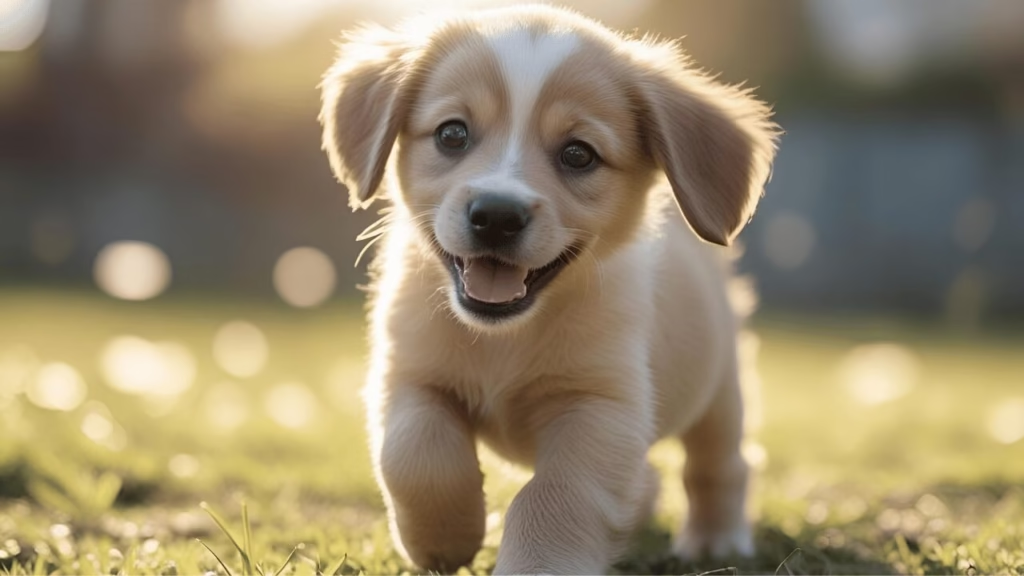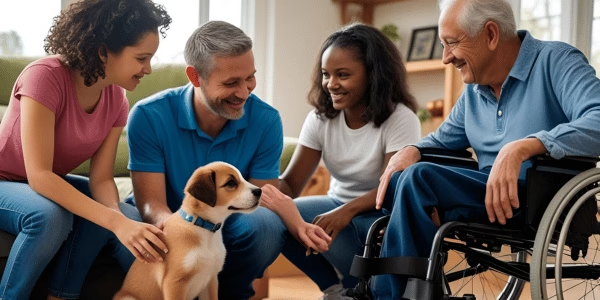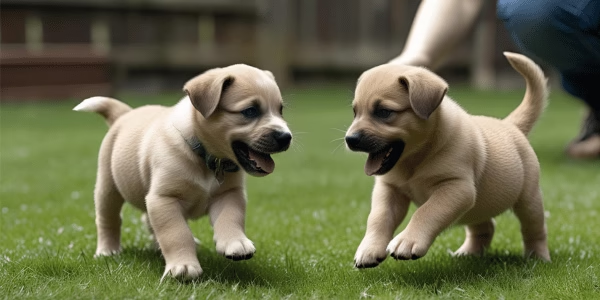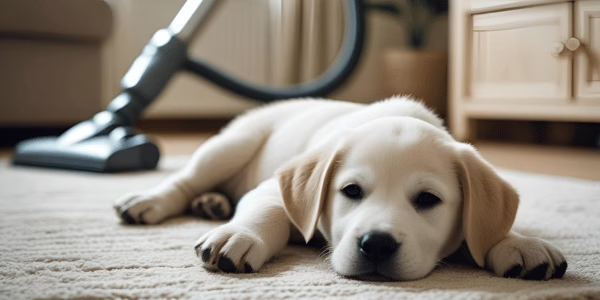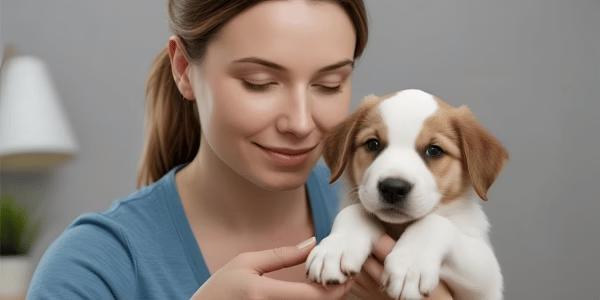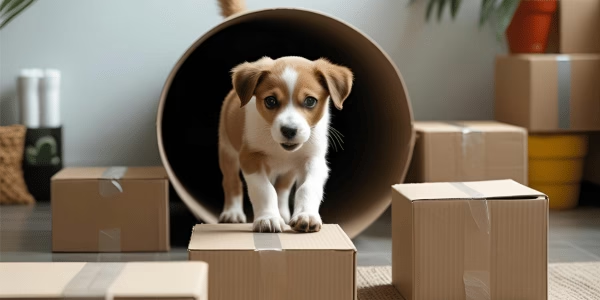Raising a confident, well-adjusted dog starts long before they reach adulthood. In fact, a puppy’s critical socialization window—from around 3 to 16 weeks—can shape their behavior and emotional responses for the rest of their life. During this period, puppies are especially receptive to new experiences, and what they learn—or don’t learn—can have a lifelong impact on their temperament, confidence, and ability to handle stress.
That’s why socializing your puppy before they’re 6 months old is not optional. It’s essential. Proper socialization builds the foundation for a happy, resilient, and adaptable adult dog, reducing the risk of fear-based behaviors and helping your pup thrive in a variety of environments.
In this article, I’ll walk you through 9 smart, safe, and effective socialization activities to help your young pup become a calm, curious, and friendly companion. Whether you’re a new dog parent or an experienced owner with a new pup in tow, this guide is designed to give you practical, expert-approved strategies.
Why Early Socialization Is Critical
According to the American Veterinary Society of Animal Behavior, puppies should be introduced to a wide range of people, pets, places, and sounds before 16 weeks of age. Missing this window can lead to long-term behavioral problems like fear, aggression, and anxiety. The experiences your puppy has during this time will shape how they view the world and how they react to new situations as adults.
Dogs that are well-socialized early on tend to:
- Adapt better to new environments
- Interact well with people and other dogs
- Stay calmer during stressful events like vet visits
- Exhibit fewer behavioral problems, such as excessive barking or destructive chewing
- Show more confidence when faced with unfamiliar objects or situations
In contrast, puppies that miss out on early socialization may become fearful or reactive, making everyday activities—from walks in the park to visits to the groomer—more challenging for both pet and owner.
The Science Behind Socialization
Research shows that the socialization period is a time of rapid brain development. Puppies are learning what is safe and what is potentially threatening. Positive exposure to a variety of sights, sounds, smells, and experiences helps build neural connections that support emotional stability and learning throughout life. This is why veterinarians and behaviorists emphasize the importance of structured, positive socialization during this stage.
9 Socialization Activities for Puppies Under 6 Months
1. Invite Calm, Diverse Visitors to Your Home
Expose your puppy to a variety of humans—men, women, people in hats, children, people using mobility aids—all in a controlled, calm environment. This helps your puppy learn that people of all shapes, sizes, and appearances are friendly and safe.
Tips:
- Start slow: One or two guests at a time to avoid overwhelming your puppy.
- Always supervise interactions to ensure safety for both puppy and visitors.
- Offer treats for calm behavior to reinforce positive associations.
- Encourage visitors to speak softly and move slowly, allowing the puppy to approach at their own pace.
- If your puppy seems shy, let them observe from a distance before joining in.
2. Puppy Playdates with Vaccinated Dogs
Early interaction with well-behaved adult dogs or other puppies is key. Choose dogs that are healthy, vaccinated, and friendly. Social play helps puppies learn canine communication skills, bite inhibition, and appropriate play behavior.
Tip: Watch for relaxed body language and take breaks if things get too energetic. If either dog shows signs of stress—such as tucked tails, growling, or hiding—separate them and try again later. Short, positive sessions are best.
- Arrange playdates in a safe, enclosed area where both dogs can interact off-leash.
- Observe the dogs closely to ensure play remains friendly and balanced.
- Rotate play partners to expose your puppy to different play styles and personalities.
3. Expose to Common Household and Urban Sounds
Play recordings of vacuums, fireworks, traffic, or thunderstorms at a low volume. Gradually increase the volume as your puppy becomes comfortable. This helps prevent noise phobias and teaches your puppy that loud or unusual sounds are nothing to fear.
Recommended tool: Through A Dog’s Ear offers sound therapy specifically designed for puppies.
- Incorporate real-life sounds, such as the doorbell, microwave, or hairdryer, into your puppy’s daily routine.
- Pair new sounds with treats and praise to create positive associations.
- If your puppy startles, remain calm and relaxed to show them there’s nothing to worry about.
4. Short Walks in New Environments
Take leashed walks around the neighborhood, a parking lot, or a quiet shopping strip. Let your pup experience different surfaces, smells, and sights. New environments provide valuable opportunities for learning and confidence building.
Caution: Until your puppy is fully vaccinated, avoid high-traffic pet areas like dog parks.
- Walk on grass, pavement, gravel, and wood chips to expose your puppy to different textures.
- Allow your puppy to sniff and explore at their own pace, but keep a close eye on what they pick up.
- Introduce your puppy to gentle, friendly strangers you meet along the way.
5. Handling and Touch Training
Gently get your puppy used to being touched on the ears, paws, muzzle, and belly—essential for vet visits and grooming later. Many dogs develop sensitivities to handling if not properly exposed as puppies.
How:
Pair each touch with praise and a treat. Keep sessions brief and upbeat.
- Practice lifting your puppy’s paws, looking in their ears, and brushing their coat.
- Gradually increase the duration and intensity of handling as your puppy becomes more comfortable.
- Invite friends or family members to participate, so your puppy learns to accept handling from different people.
6. Car Rides = Fun
Help your pup associate the car with more than just vet visits. Go for short rides and end at a fun place, like a friend’s house or a quiet pet-friendly store. This prevents car-related anxiety and motion sickness.
Bonus Tip:
Bring a chew toy for the ride to help your pup stay relaxed.
- Start with short trips around the block, gradually increasing the distance as your puppy becomes more comfortable.
- Use a secure crate or dog seatbelt for safety.
- Reward your puppy with treats and praise after each ride.
7. Enroll in a Puppy Kindergarten Class
These structured classes offer guided socialization, basic training, and exposure to new stimuli under expert supervision. Puppy classes are a great way to build your puppy’s confidence and teach foundational obedience skills.
Find local options:
- AKC S.T.A.R. Puppy Program
- Look for classes that use positive reinforcement methods and limit class size for individualized attention.
- Ask about vaccination requirements to ensure a safe environment for all puppies.
- Use class time to ask trainers about any behavioral concerns or questions you have.
8. Visit Dog-Friendly Retail Stores
Home Depot, Lowe’s, and PetSmart often welcome dogs. Take short trips to help your puppy get used to shopping carts, crowds, and odd noises. These outings build your puppy’s confidence in busy, unpredictable environments.
Things to watch for:
- Automatic sliding doors, which can be startling for some puppies.
- Slippery floors that may require your puppy to adjust their footing.
- Echoes and loud sounds that can be overwhelming at first.
- Start with short visits during off-peak hours to avoid crowds.
- Bring treats and reward your puppy for calm, curious behavior.
- Allow your puppy to observe from a distance before approaching new sights or sounds.
9. Create a Mini Obstacle Course at Home
Use objects like boxes, towels, and chairs to introduce your pup to crawling, climbing, and exploring unusual textures and shapes. This activity builds confidence and problem-solving skills.
| Object | Purpose | Desired Reaction |
| Bubble wrap | Texture/sound | Curiosity, no fear |
| Open umbrella | Surprise visual | Sniff, no bark or retreat |
| Tunnel (box or tube) | Spatial awareness | Willing to go through |
- Change the course regularly to keep it interesting.
- Supervise your puppy to ensure safety and prevent chewing on unsafe items.
- Celebrate your puppy’s successes with treats and praise.
Safety First: Socialization Guidelines
Before diving into these activities, keep these safety tips in mind:
- Vaccination status matters. Limit exposure to unknown dogs or public areas until your vet gives the green light.
- Don’t force it. If your puppy seems overwhelmed, slow down. Let them approach at their own pace.
- Pair every new experience with a treat. This builds positive associations and confidence.
- Watch for signs of stress, such as yawning, lip licking, or hiding, and give your puppy a break if needed.
- Keep sessions short and positive. Quality is more important than quantity.
Puppy Socialization Milestone Chart
Here’s a helpful timeline to guide your pup’s first few months of experiences.
| Age (Weeks) | Milestone Goals |
| 8–10 weeks | Meet 5+ new people, try 3+ sounds |
| 10–12 weeks | Short car rides, handling games |
| 12–16 weeks | Leashed walks, visit stores |
| 16–24 weeks | Puppy classes, groomer visits |
- Track your puppy’s progress and celebrate each new milestone.
- Adjust your socialization plan based on your puppy’s comfort level and personality.
Additional Tips for Successful Puppy Socialization
- Use a variety of treats to keep your puppy motivated and engaged during socialization sessions.
- Expose your puppy to people wearing different types of clothing, such as sunglasses, raincoats, or uniforms.
- Practice brief separations to help your puppy learn to be comfortable alone, reducing the risk of separation anxiety.
- Introduce your puppy to different modes of transportation, such as elevators or bicycles, if possible.
- Document your puppy’s experiences with photos or a journal to track their progress and identify areas for improvement.
If you’re also working on bedtime routines with your new pup, you might find our guide on How to Crate Train Your Puppy at Night helpful
Final Thoughts from Jeremy Lennox
You only get one shot at your puppy’s early social development—and it’s a short window. With these 9 activities, you can help your pup grow into a confident, friendly, and well-balanced dog that’s a joy to live with.
Socialization isn’t about doing everything at once. It’s about consistent, calm exposure paired with love and patience. Stick with it, and you’ll see lasting benefits for years to come.
Remember, every puppy is unique. Some may need more time and encouragement, while others will dive into new experiences with enthusiasm. The key is to go at your puppy’s pace and make every new encounter a positive one. With dedication and thoughtful planning, you’ll set your puppy up for a lifetime of happiness, confidence, and companionship.

